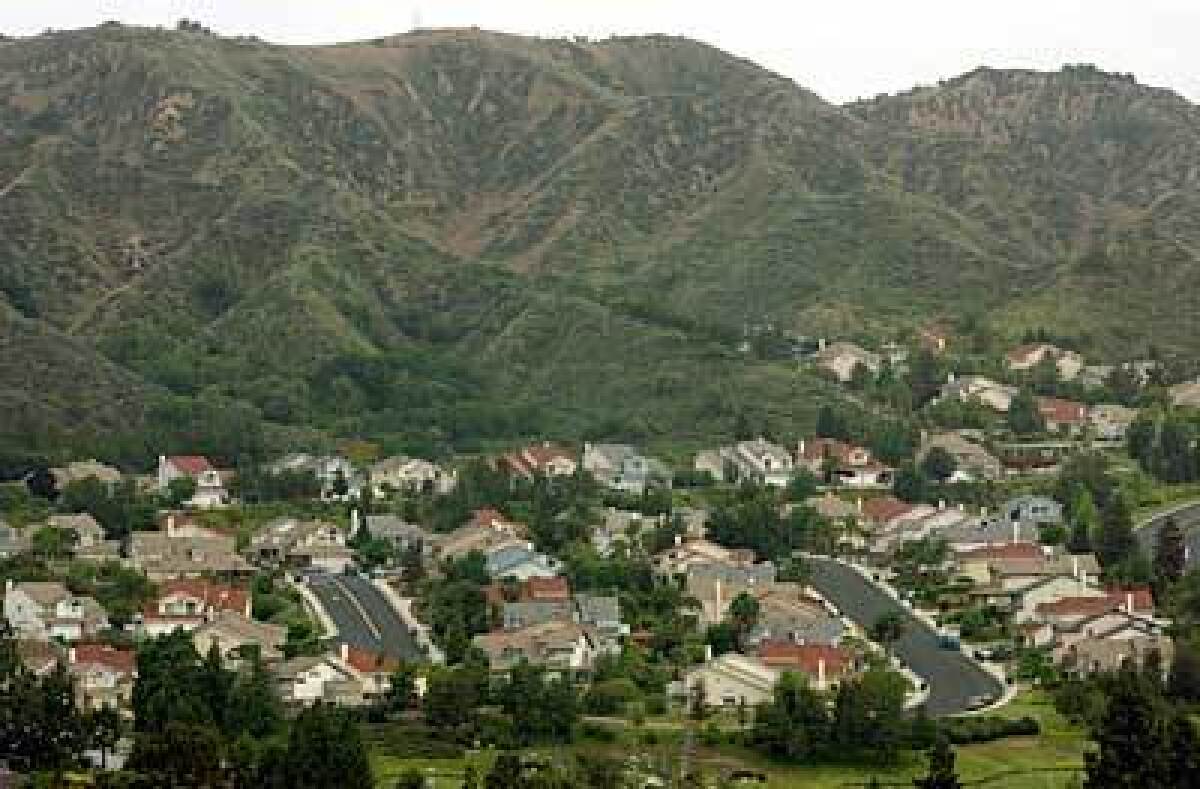Where the groves once stood

- Share via
Despite rapid growth, Walnut, on the eastern limits of the San Gabriel Valley, retains plenty of open space. Citrus and black walnut groves once dominated the rolling hills and valleys, but a blight in the 1930s wiped out most of the town’s namesake crop. Two walnut groves managed to survive; one with nearly 100 trees was dedicated as a preservation site in 1986.
Early days
Only 1,000 residents made Walnut their home when the city incorporated in 1959, but the population grew steadily and then exploded from 12,478 to 29,105 in the 1980s. During that decade, Walnut gained distinction as the fastest-growing city in the San Gabriel Valley and the second-fastest-growing city (second to Palmdale) in Los Angeles County. With the city nearly built out, Walnut is now home to about 31,000.
Wow factor
New homes may have replaced the walnut trees on the rolling hills, but an abundance of parks and open space and 26 miles of hiking and equestrian trails help Walnut retain the atmosphere of its agricultural roots.
“It’s a suburb with a rural feel,” said City Manager Jeffrey Parker. A general plan devised in 1978 stipulated that developers must donate land or money for parks when building new homes, a policy that has contributed to the city’s almost 90 acres of recreational land.
Drawing card
One of the lowest crime rates in Los Angeles County and top-notch schools make this bedroom community a popular choice for families.
East comes West
Monterey Park still has the highest concentration of Asians in Los Angeles County, with 64%, but Walnut is not far behind with 58%, up from 30% in 1990.
Good news, bad news
Conveniently located strip malls and shopping plazas served as neighborhood centers, but Walnut lacked a main street and a community focal point. That has changed since the recent opening of Snow Creek Village, a retail and senior residential center that includes fountains, piped-in music and an outdoor eating plaza. Chain retail stores and restaurants, not one-of-a-kind businesses, are still the driving force in the Village and the other Walnut shopping plazas.
Report card
Two school districts, Walnut Valley Unified and Rowland Unified, serve Walnut students. The five Walnut Valley Unified and two Rowland Unified elementary schools scored from a low of 779 at Walnut Elementary to a high of 900 at Westhoff on the 2003 Academic Performance Index. Suzanne Middle School scored 835 and Walnut High School, a two-time National Blue Ribbon School, scored 816.
Stock report
The city has more than 8,400 housing units that range from modest ‘50s-style ranch homes to luxurious mini-mansions. Most homes have views of the surrounding San Jose Hills and Puente Hills.
On the market
Currently, there are 33 listings on the market, ranging from a 905-square-foot condominium for $272,000 to a 4,857-square-foot home for $1,530,000.Historical values
Single-family detached resales:Year...Median Price
1990...$296,7501995...$227,000
2000...$284,000
2002...$359,000
2004*...$470,000
*Year to dateSources: DataQuick Information Systems, city of Walnut website, https://www.ci.walnut.ca.us/ ; Jeffrey Parker, Walnut city manager; Realtor Susan Munguia, Coldwell Banker Town & Country; https://www.greatschools.net ; Walnut Valley Unified School District website, https://www.walnutvalley.k12.ca.us/ ; Rowland Unified School District website, https://www.rowland-unified.org/ .
More to Read
Sign up for Essential California
The most important California stories and recommendations in your inbox every morning.
You may occasionally receive promotional content from the Los Angeles Times.





